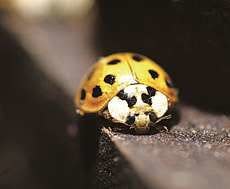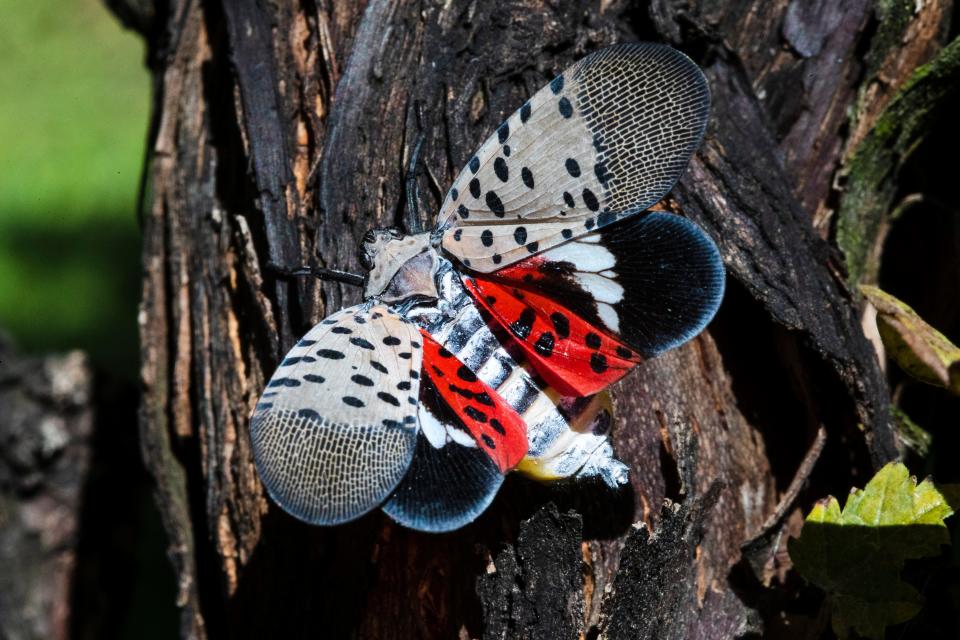Insects swarming, invading your house? They could be Asian lady beetles
A once-invited guest, Asian lady beetles are now considered an invasive insect in the U.S. — and they may be an uninvited guest in your home right now as the insects swarm, searching for a warm place to hide from freezing temperatures. Colder weather is due to return to the area at the end of the week.

"They get into cracks and crevices to keep out of the wind and cold weather," explained Megan Abraham, director of the state's Division of Entomology and Plant Pathology.
Abraham said the Asian beetles, commonly called Asian ladybugs, can easily work their way inside homes that aren't tightly sealed. They seem to be attracted to light-colored buildings and will often "sun" themselves outside in sunlight as well.
"After the first freeze, they will be gone," Abraham said of beetles that are outdoors. "It's not uncommon to find them swarming on the sides of buildings."
But if they work their way inside, the beetles can live a little longer if they're not tossed out or vacuumed up. Even if they remain in a crevice or closet, the beetles won't live long because their food source, aphids, is not available.
Asian lady beetles were introduced in the U.S. to help control aphids and other pests that harm agricultural crops. An unintended consequence of their introduction is that the Asian ladybugs out-compete the native ladybugs, which are less aggressive.
Which bugs to kill: Finding bugs in your home? Here's which ones are invasive and why you should kill them
Abraham said even though the Asian lady beetles are invasive, they do help eat aphids that suck the life out of plants during the growing season. The beetles don't bite and though they can pinch, it's unlikely they will.
Watch out for the other spotted insect that's invaded Indiana
Another invasive insect that's spotted, the spotted lanternfly, is getting noticed in Indiana since the Indiana Department of Natural Resources recently reported its discovery in the northern cities of Chesterton, Elkhart and Mishawaka. It's the third location in Indiana where the spotted lanternfly has been found. It was first seen in Switzerland County two years ago and last summer was discovered in Huntington.

The insect is a huge problem for wineries, orchards, nurseries and the logging industry. Spotted lanternflies are voracious eaters and suck the sap from vines, fruit and trees. They leave a waste product called sticky honeydew underneath the area where they've eaten. Soon, blackish, sooty mold — a fungal disease — starts to grow.
Abraham said spotted lanternflies also have been found in new areas of Kentucky, Tennessee and in Chicago as the insect makes its way west. The lanternfly is following the railroad lines through states because the casings for the eggs are difficult to find and the favorite food of spotted lanternfly is another invasive — tree of heaven, which grows along much of the railroad beds across the U.S.
"It’s making that progression with human-assisted transport, rail and trucks that can accidentally move it across the country," she explained. "What we want to do is keep it away from our vineyards as long as we can so it doesn't impact our growers."
Abraham said one way to combat the spread of spotted lanternfly is to destroy tree of heaven. Sometimes officials are letting one large tree of heaven thrive after it's been sprayed with a systemic insecticide that will kill spotted lanternflies that feed on its sap. She calls those "trap trees."
So far that's one of the few ways officials have been able to slow their progress.
While the adults have been killed off by earlier cold temperatures and won't be present again until summer, Abraham said people can look for the casings that hold eggs. They look like a brown or gray smear or smudge, often located on a vertical surface including trees, trucks and train cars.
For more on spotted lanternflies, go online to https://tinyurl.com/mt4k6fja, call 866-NO-EXOTIC (866-663-9684) or email DEPP@dnr.IN.gov. People are encouraged to send photos and descriptions of insects they notice that seem unusual, so state officials can get ahead of the next bug that tries to invade the Hoosier state.
Contact Carol Kugler at ckugler@heraldt.com.
This article originally appeared on The Herald-Times: Swarms of Asian lady beetles at your house? It won't last long

